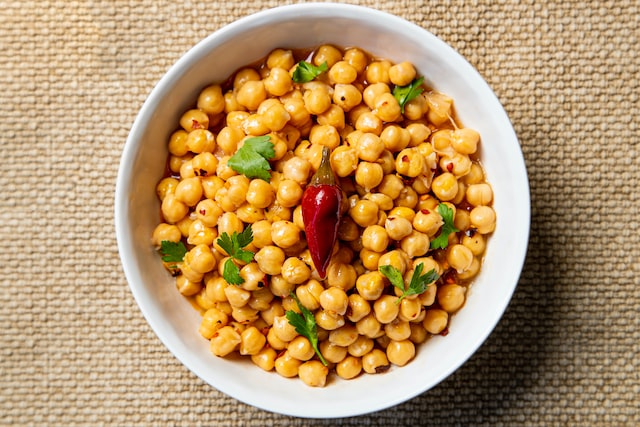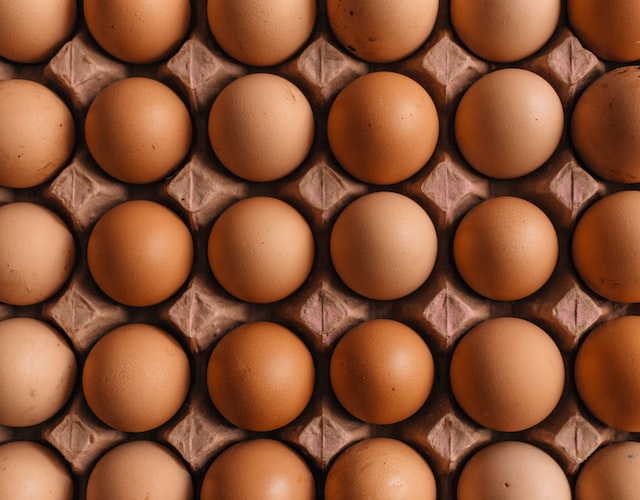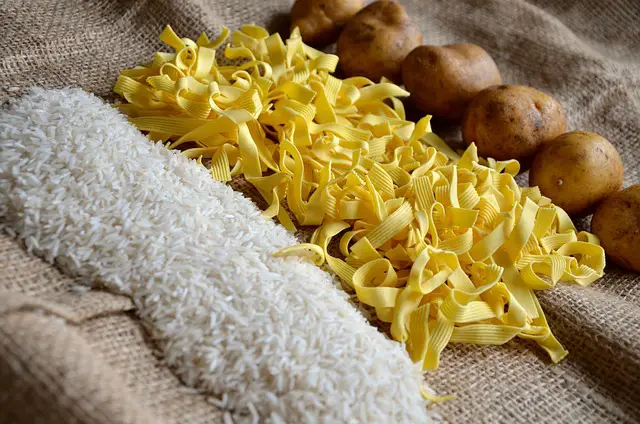Carbohydrates are a class of macronutrients that provide the body with energy and are primarily found in foods like grains, fruits, and vegetables. Lipids, on the other hand, are a group of macronutrients that provide energy, insulation, and protection to organs and are found in foods like oils, nuts, and animal products. The main difference between carbohydrates and lipids is that lipids contain more energy per gram than carbohydrates and are typically used as a long-term energy source, while carbohydrates are used for short-term energy needs.
What are carbohydrates?
Carbohydrates are a type of macronutrient found in many foods and are an important part of a healthy diet. They are made up of sugar molecules and are broken down by the body to be used for energy. Carbohydrates can be simple or complex, and are found in many different forms including: bread, pasta, rice, potatoes, fruits, and vegetables.
What are lipids?
Lipids are another type of macronutrient that are also found in many foods. They are made up of fatty acids and are used by the body for energy and cell growth. Lipids can be either saturated or unsaturated, and are found in such foods as: meats, cheese, butter, nuts, and oils. They include fats, waxes, and some vitamins (such as A, D, and E). Lipids are an important energy source for the body, and they also help to protect organs and tissues.
Carbohydrates Vs. Lipids – Key differences
Carbohydrates and lipids are two types of biomolecules that are essential to the human body. Both of these molecules are involved in a variety of biochemical processes, but they have some key differences.
Carbohydrates are made up of carbon, hydrogen, and oxygen atoms. They can be either simple or complex, and they are classified based on the number of sugar units they contain. Carbohydrates are an important source of energy for the body, and they also play a role in metabolism and cell signaling.
Lipids are made up of fatty acids and glycerol. They can be either saturated or unsaturated, and they play an important role in cell membranes and other biological structures. Lipids are also a source of energy for the body, but they are not as easily metabolized as carbohydrates.
The main difference between carbohydrates and lipids is their structure. Carbohydrates are made up of sugars, while lipids are made up of fatty acids. This difference in structure leads to differences in function. Carbohydrates are primarily used for energy, while lipids play a more structural role.
The role of carbohydrates in the body
Carbohydrates play several essential roles in the body, including:
- Energy production: Carbohydrates are the primary source of energy for the body. When we eat carbohydrates, they are broken down into glucose, which is used by cells to produce ATP (adenosine triphosphate), the body’s main energy currency.
- Brain function: The brain relies on glucose as its primary energy source. Without adequate glucose, brain function can be impaired.
- Protein sparing: Carbohydrates can help spare protein for its primary function of building and repairing tissues. If the body doesn’t have enough carbohydrates, it may break down protein to use for energy instead.
- Digestive health: Certain types of carbohydrates, such as fiber, are not fully digested in the body but instead help regulate bowel movements, promote satiety, and support digestive health.
- Athletic performance: Carbohydrates are particularly important for athletes and individuals who engage in high-intensity exercise because they provide energy for muscle contraction and can help delay fatigue.
The role of lipids in the body
Lipids play several essential roles in the body, including:
- Energy storage: Lipids are an efficient way to store energy, as they contain more calories per gram than carbohydrates or proteins. They are stored in adipose tissue and can be used for energy when needed.
- Insulation: Lipids, particularly adipose tissue, act as insulation to help regulate body temperature.
- Cell membrane structure: Lipids, such as phospholipids and cholesterol, are essential components of cell membranes, helping to maintain their structure and function.
- Hormone production: Lipids are used to produce several hormones, including steroid hormones such as testosterone and estrogen.
- Absorption of fat-soluble vitamins: Lipids help absorb fat-soluble vitamins, including vitamins A, D, E, and K, which are important for several bodily functions.
- Protection of organs: Lipids, such as adipose tissue, provide cushioning and protection to organs, such as the kidneys and heart.
How are carbohydrates and lipids different and similar?
Carbohydrates and lipids are both macronutrients that provide energy to the body, but they differ in several ways.
Differences:
- Chemical structure: Carbohydrates are composed of carbon, hydrogen, and oxygen, while lipids are primarily composed of carbon and hydrogen, with some oxygen.
- Energy storage: Lipids are more energy-dense than carbohydrates, containing more calories per gram, and are the body’s preferred long-term energy storage source. Carbohydrates are typically used for short-term energy needs.
- Solubility: Carbohydrates are water-soluble, while lipids are not.
- Digestion: Carbohydrates are easily digested and broken down into glucose, which is used for energy, while lipids require more time and energy to digest.
Similarities:
- Energy production: Both carbohydrates and lipids provide energy to the body.
- Structural role: Both carbohydrates and lipids play structural roles in the body. Carbohydrates are components of cell walls and extracellular matrices, while lipids are essential components of cell membranes.
- Hormone production: Both carbohydrates and lipids are used in hormone production, with carbohydrates being used to produce insulin, and lipids used to produce steroid hormones.
- Dietary intake: Both carbohydrates and lipids are essential nutrients that need to be obtained through the diet, as the body cannot produce them on its own.
The benefits and disadvantages of Carbohydrates and Lipids
Carbohydrates and lipids are essential macronutrients that provide energy and perform critical functions in the body. Here are some benefits and disadvantages of each:
Benefits of Carbohydrates:
- Provide quick energy: Carbohydrates are quickly broken down into glucose, which provides the body with immediate energy.
- Aid in digestion: Carbohydrates that are high in fiber can promote digestive health by preventing constipation and regulating bowel movements.
- Support athletic performance: Carbohydrates are particularly important for athletes and individuals who engage in high-intensity exercise because they provide energy for muscle contraction and can help delay fatigue.
Disadvantages of Carbohydrates:
- Overconsumption: Consuming too many carbohydrates, particularly refined carbohydrates and added sugars, can lead to weight gain, insulin resistance, and an increased risk of chronic diseases.
- Blood sugar spikes: Eating large amounts of refined carbohydrates can cause a spike in blood sugar, which can lead to insulin resistance and increase the risk of developing type 2 diabetes.
- Nutrient deficiencies: A diet high in carbohydrates may be lacking in essential vitamins and minerals, particularly if it contains low-quality sources of carbohydrates.
Benefits of Lipids:
- Energy storage: Lipids are an efficient way to store energy and provide the body with a long-term energy source.
- Brain function: Lipids are important for maintaining brain function and supporting the central nervous system.
- Hormone production: Lipids are essential for hormone production, particularly steroid hormones such as testosterone and estrogen.
Disadvantages of Lipids:
- Overconsumption: Consuming too much dietary fat can lead to weight gain, high cholesterol levels, and an increased risk of heart disease.
- Inadequate intake of essential fatty acids: The body cannot produce essential fatty acids, so they must be obtained through the diet. A diet that is too low in fat or contains low-quality sources of fat may not provide enough essential fatty acids.
- Risk of foodborne illness: High-fat foods, particularly those of animal origin, can be a breeding ground for harmful bacteria if not stored and prepared properly.
What are the foods that contain carbohydrates?
(Photo by Clark Douglas on Unsplash )

Carbohydrates are found in many foods, including:
- Grains: Wheat, rice, oats, barley, corn, and other grains are high in carbohydrates, particularly in the form of starch.
- Fruits: Most fruits contain carbohydrates in the form of fructose, a natural sugar.
- Vegetables: Starchy vegetables such as potatoes, sweet potatoes, and corn are high in carbohydrates, while non-starchy vegetables such as broccoli, cauliflower, and spinach are low in carbohydrates.
- Legumes: Beans, lentils, chickpeas, and other legumes are high in carbohydrates and also provide protein and fiber.
- Dairy: Milk, yogurt, and other dairy products contain lactose, a natural sugar that is a type of carbohydrate.
- Sugars: Table sugar, honey, maple syrup, and other sweeteners are high in simple carbohydrates, which are quickly broken down by the body.
- Processed foods: Many processed foods, such as bread, pasta, and cereal, contain added sugars and refined carbohydrates.
It’s important to note that not all carbohydrates are created equal, and it’s generally recommended to consume complex carbohydrates, such as those found in whole grains, fruits, and vegetables, rather than simple carbohydrates found in sugary snacks and processed foods.
What are the foods that contain lipids?
(Photo by Erol Ahmed on Unsplash )

Lipids are a group of organic compounds that include fats, oils, waxes, and related substances. They are an essential component of a healthy diet and are found in a wide variety of foods. Some common examples of foods that contain lipids include:
- Animal-based foods: meat, poultry, fish, dairy products, eggs, and animal fats (such as lard and butter).
- Plant-based foods: nuts, seeds, avocados, olives, and vegetable oils (such as olive oil, canola oil, and coconut oil).
- Processed foods: processed snacks, desserts, and baked goods, which may contain high amounts of added fats and oils.
It’s important to note that while lipids are an essential part of a healthy diet, it’s important to consume them in moderation as excess consumption can lead to weight gain and health problems.
Featured Image By – congerdesign from Pixabay








